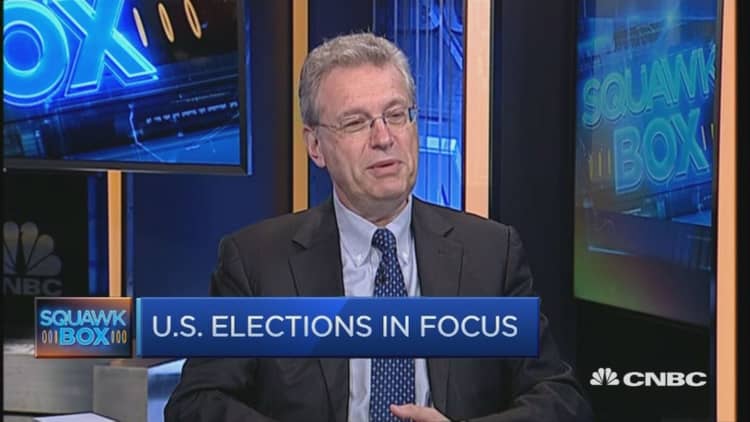Whoever won the election would have found clear policy markers, set by asset prices reflecting the best available information about the current state of key economic fundamentals.
That is an unyielding policy corset where the vote-grabbing campaign rhetoric will come down crashing. And then we shall see hand-wringing, shoulders shrugging and the usual invocation of that age-old prophecy: "Election promises are made to be broken."
Whether that should be one of the hallmarks of democratic societies has been a matter of debate ever since Socrates (470/469-399 BC) held court around Athens, trying to educate his fellow citizens in clear thinking and in the virtues of public service. That debate will go on. Reassuringly, Plato's (Socrates disciple) Republic is still at the top of required readings in the most prestigious American colleges.
The incoming class of our leaders will test their political philosophy on the socio-economic issues such as price stability, budget deficits, public debt and the soaring net foreign liabilities.
How they handle these problems will determine the outlook for jobs and incomes, and will seal their fate in the next election cycle, starting with midterm Congressional elections in 2018. That is when all 435 seats in the U.S. House of Representatives and 33 of the 100 seats in the U.S. Senate will be up for grabs. And that is also when the acting president could become a walking wounded and a one-term player.
The agenda is set
So, let's review briefly these immediate policy challenges. I shall start with price inflation, using the consumer price index because that is the most widely known inflation indicator to the general public.
The latest data are not particularly alarming, but they are enough of a warning to prompt a deliberate process of monetary tightening. Those who think that a 1.5 percent annual increase of consumer prices in September is nothing to get excited about probably don't know that the pace of advance of these prices nearly doubled during the third quarter.
Excluding the volatile components of food and energy, consumer prices are now 2.2 percent above their year-earlier levels. Service sector prices are up 3.2 percent, with the costs of housing, transportation and medical care rising in the range of 3.2 percent to 4.8 percent. To round off this inflation picture, one might also add a 2.3 percent annual increase last September of labor compensation costs, and a 2.3 percent annual increase in unit labor costs (hourly compensation minus productivity growth) during the third quarter.

All these cost and price variables are showing steady acceleration. They have also reached the levels where caution requires a monetary response to forestall major slippages in the months ahead. That's what the Fed is doing now.
Fixed-income markets have reacted to Fed's widely publicized policy intentions, but they seem to be reassured (?) by the huge liquidity and tranquilizers that the Fed would do what it has to do gently and without any precipitation.
Investors should not be lulled into complacency. The bond market money has been made. The Fed and the bond markets are now facing a distinct possibility of an ex-ante unknowable acceleration of cost and price inflation.
Whose ox will be gored?
Fiscal policy is also confronted with a binding constraint. Any growth-supporting measures, therefore, must come from new revenue sources and a rearrangement of national priorities.
During the fiscal year ended last September, the budget deficit rose for the first time in five years to $587 billion – showing a 34 percent increase from the previous year. The public debt at this writing stood at $19.8 trillion - 106 percent of GDP, and counting.
These are the most glaring and the most widely publicized fiscal problems. And here is another zinger: The government's unfunded liabilities of $104.1 trillion – where the current deficits of the politically untouchable entitlement programs of Social Security and Medicare account for a total of $43.1 trillion.
The difficulty here is that there is no way to begin a long road to fiscal consolidation without the dreaded redistribution of income – put very, very simply: Take from Peter to pay Paul. We got some hints about "Peters and Pauls" by looking at campaign donations, but we have yet to see how problems of fiscal policy will be tackled by the new legislative and executive authorities.

Structural policies of market deregulation to increase economic efficiency also have income redistribution effects. We surely need some of those. But we also need structural policies to improve infrastructure and to increase the stock and the quality of human capital through education and healthcare, in order to raise labor productivity and the noninflationary growth of the economy.
Foreign trade is another area of public policy that needs attention to (a) level the playing field for our overseas business operations, and (b) significantly improve international policy coordination to reduce global trade imbalances.
Here is how urgent that task is.
At the end of the second quarter, our net foreign liabilities shot up to $8 trillion from $7.6 trillion in the previous quarter. And this is pretty alarming: In the twelve months to the second quarter, America's net foreign debt soared by $1.3 trillion.
No wonder our overseas creditors are balking. The total stock of U.S. government debt currently held by non-residents ($6.2 trillion) has been on a steady decline since last March, with the foreign official holdings falling 5.5 percent in the year to August.
Investment thoughts
The election winner is inheriting problems of accelerating cost and price inflation, sharply rising budget deficits, debilitating public debt and a worrying increase in America's net foreign liabilities.
These problems must be addressed with (a) tightening monetary policies, (b) income redistribution and rearrangements of national priorities, (c) structural policies to rebuild infrastructure and increase the stock and quality of human capital, and (d) trade policies to reduce excessive global imbalances.
Markets are watching all this. The Fed has to deliver price stability. Congress and the will have to come up with fiscal and trade policies to keep down budget and trade deficits.
Failure to do that would lead to dumping of U.S. assets, rising interest rates, declining economic activity, increasing unemployment and …


